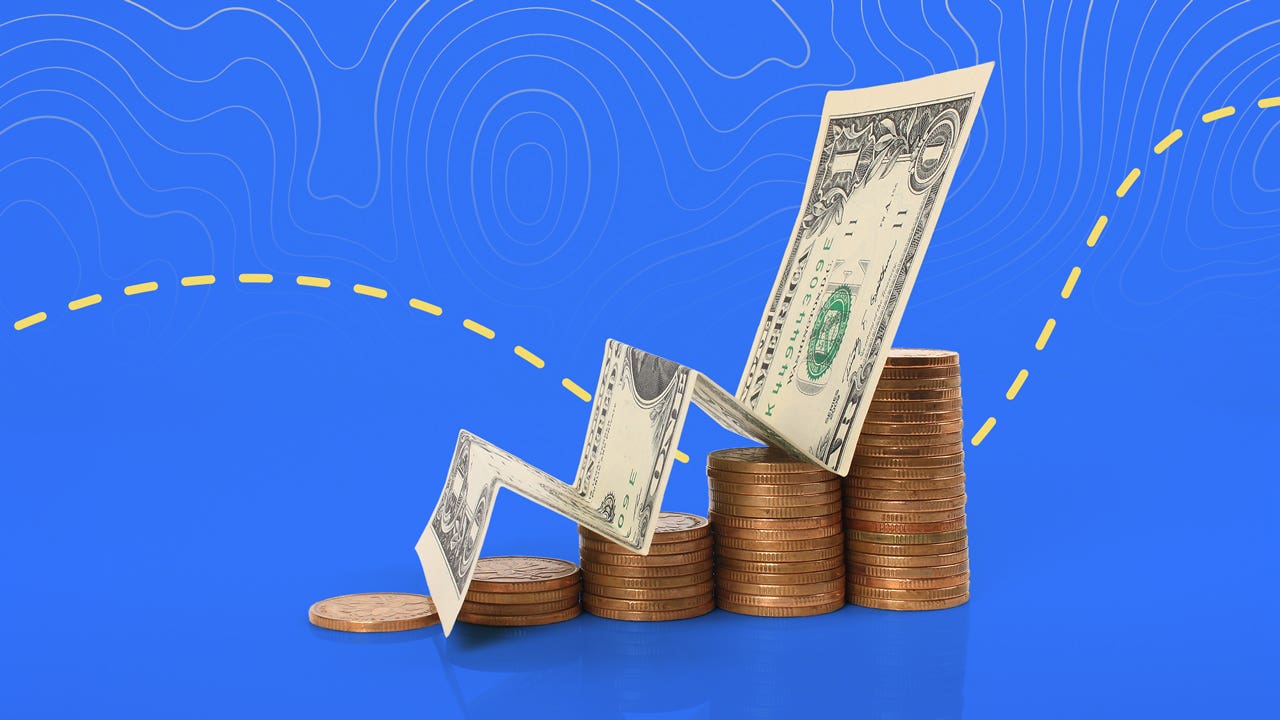CD ladder: What it is and how to build one




Our writers and editors used an in-house natural language generation platform to assist with portions of this article, allowing them to focus on adding information that is uniquely helpful. The article was reviewed, fact-checked and edited by our editorial staff prior to publication.
Key takeaways
- A CD ladder consists of opening several CDs with different maturity dates.
- A CD ladder's benefit is you can earn high rates and also have access to portions of your money at frequent intervals.
- With a ladder, you can decide how much money to deposit in each CD and whether to reinvest in a new CD when each CD matures.
A CD ladder is a savings strategy where you invest in several certificates of deposit (CDs) with staggered maturities. Although CD rates are currently higher for shorter-term CDs, setting up a CD ladder would allow you to get those high rates for the short term, while also taking advantage of some longer-term stability to withstand market fluctuations.
With this strategy, you’ll redeem funds more often than if you put all of your savings in a long-term CD, while still reaping some long-term, predictable benefits.
How to build a CD ladder
Here’s an example of how to set up a CD ladder. Let’s say you want to build a five-year CD ladder with five rungs. If you have $2,500 to invest, then you might divide the funds equally into five CDs with different maturity dates. Here’s how you could set it up:
1. Open the CDs. You’ll open five CDs with terms ranging from one year to five years as follows:
- $500 into a one-year CD
- $500 into a two-year CD
- $500 into a three-year CD
- $500 into a four-year CD
- $500 into a five-year CD
2. Reinvest the money when the CDs mature.
When the first CD matures after a year, you can continue to build your ladder by reinvesting the funds in a new CD. Then, when the two-year CD matures, use the proceeds from that account to open a new CD. Continue the process each year for as long as you want to maintain the CD ladder. You can also choose to cash out the CDs and use the money for other purposes, depending on your financial needs and goals.
The CDs don’t have to hold the same amount of money, so you may opt to open each one with varying balances to accumulate a higher yield. For example, you might want to invest more in shorter-term CDs while their rates are high. Just remember that there’s usually an early withdrawal penalty for taking out the funds before the CD’s maturity date.
As you build your CD ladder, there’s no obligation to open all of your CDs at the same bank or credit union. In fact, it’s a good idea to shop for the best CD rates for each term.
Alternative CD ladder structures
There are several ways to modify a traditional CD ladder strategy based on your goals:
- Mini CD ladder: Creating a CD ladder with only shorter-term CDs could be an option for savers who don’t wish to invest in longer-term ones. For instance, such a ladder could consist of terms of six, nine, 12 and 18 months.
- Barbell CD ladder: A barbell CD strategy is similar to a traditional CD ladder, but the middle rungs are missing. As such, short-term CDs make up one end of the structure, while long-term CDs comprise the other end. A potential benefit of this is you could have access to some of your funds sooner, while taking advantage of longer terms with higher rates.
- Bullet CD ladder: A bullet CD strategy consists of opening several CDs over time, of varying term lengths, that will all mature at once. An example would be opening a five-year CD now, a four-year CD in a year and a three-year CD in two years. This can come in handy when you’re planning for a large expense. You won’t have to come up with all of the funds at once, giving you time to save more money to commit to additional CDs.
Benefits of a CD ladder
- CDs offer a guaranteed rate of return.
- You can take advantage of higher rates on shorter-term CDs while having some funds earn predictable rates for longer terms.
- If rates rise, you can reinvest the money from shorter-term CDs into new accounts to lock in higher APYs.
- Keeping some funds in shorter-term CDs ensures that your money is more accessible than if it were all kept in a long-term CD.
Drawbacks of a CD ladder
- You could be missing out on higher returns from more aggressive investments, such as stocks or bonds.
- If interest rates decline, you might be reinvesting the money from a matured CD into lower rates.
- If you end up investing too much in longer-term CDs, you may find yourself having to withdraw money before the maturity date and get hit with a penalty fee.
Are CD ladders good investments?
A CD ladder can help you build a predictable investment return. It also provides the potential to earn better returns than you would with a single CD and the ability to access a portion of your savings each time a CD matures.
While there’s no risk of losing any of your money in an FDIC-insured CD, you could potentially miss out on the opportunity to earn a better rate if you reinvest shorter-term CDs when rates decline. Plus, you’ll potentially lose out on better returns offered by other investment vehicles with greater growth potential.
Consider your reason for opening a CD ladder before committing to one. It could be a great fit for your short-term savings goals, but a long-term savings effort might require an additional boost from other investment vehicles.
– Bankrate’s Karen Bennett updated this article.




